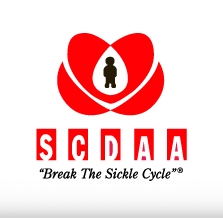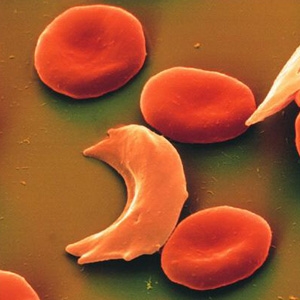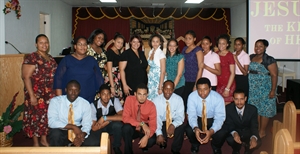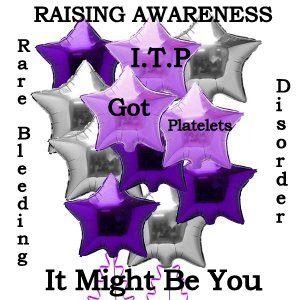National Sickle Cell Month on September, 2024: what is sickle cell anemia?
September, 2024 is National Sickle Cell Month 2024. Sickle Cell Awareness Month Sickle cell disease (SCD) is a

Sickle cell anemia is an inherited blood disorder that mostly affects people of African ancestry, but also occurs in other ethnic groups, including people who are of Mediterranean and Middle Eastern descent.
More than 70,000 Americans have sickle cell anemia. And about 2 million Americans — 1 in 12 African Americans — have sickle cell trait, which means they carry a single gene for the disease, but do not have the disease itself.
What Is Sickle Cell Anemia?
Sickle cell anemia is a blood disorder that affects hemoglobin (pronounced: hee-muh-glow-bin), the protein found in red blood cells (RBCs) that helps carry oxygen throughout the body.
Sickle cell anemia occurs when a person inherits two abnormal genes (one from each parent) that cause their RBCs to change shape. Instead of being flexible and disc-shaped, these cells are more stiff and curved in the shape of the old farm tool known as a sickle — that's where the disease gets its name. The shape is similar to a crescent moon.
Red blood cells with normal hemoglobin (hemoglobin A, or HbA) move easily through the bloodstream, delivering oxygen to all of the cells of the body. Normal RBCs are shaped like discs or doughnuts with the centers partially "scooped out" and are soft and flexible. They can easily "squeeze" through even very small blood vessels.
Sickle cell anemia occurs because an abnormal form of hemoglobin (HbS) is produced. HbS molecules tend to clump together, making red blood cells sticky, stiff, and more fragile, and causing them to form into a curved, sickle shape.
RBCs containing HbS can go back and forth between being shaped normally and being sickle shaped until they eventually become sickle shaped permanently. Instead of moving through the bloodstream easily, these sickle cells can clog blood vessels and deprive the body's tissues and organs of the oxygen they need to stay healthy.
Unlike normal RBCs that last about 4 months in the bloodstream, fragile sickle cells break down after only about 10 to 20 days, which usually causes anemia. Anemia (pronounced: uh-nee-mee-uh) is what happens when the body's number of red blood cells (or amount of hemoglobin) falls below normal. People who are anemic often feel weak, tire more easily, and may appear "run down."
People with sickle cell anemia can also experience complications from impaired blood circulation and infection-fighting problems. These include a higher risk of certain infections and stroke as well as a condition called acute chest syndrome, which is caused by inflammation or trapped RBCs in the lungs.
Sickle cell anemia is not contagious, so you can't catch it from someone else or pass it to another person like a cold or an infection. People with sickle cell anemia have inherited two sickle cell genes, one from each parent. A child who has inherited the sickle cell gene from only one parent will not develop the disease, but will have sickle cell trait. People who have sickle cell trait don't have sickle cell anemia or symptoms of the disease, but they can pass the sickle cell gene on to their own children.
Because people with sickle cell trait don't have the disease, they may never discover that they carry the gene. That's why it's recommended that teens who are unsure of their sickle cell status ask their doctors about testing. The National Institutes of Health (NIH) recommends that all newborns be screened for sickle cell disease, and testing at birth is now required in almost every state. This helps infants with sickle cell anemia get the care and treatment they need right away.

Why tag African American donated blood specifically for Sickle Cell patients? Isn't blood type what matters?
I googled it and I see that what you are saying is true.
I am a nurse and have never heard of such a thing before this. I know that sickle cell is something that the people have a very serious illness and can be fragile. I think they are trying to match up every little sub-factor by matching not just blood types but ethnicity, since the patients have to have sometimes multiple transfusions (not just one transfusion every so often as other people do in life). I think it is the sub-factors that they are trying to match up.
I think they would take Asian blood for an Asian disease requiring multiple transfusions, too. To match up the sub-factors.

do people with sickle cell disease...?
It depends on the people that the person with the disease associate with in society. The treatments for the disease are normally about the same and yes it can be fatal if not treated.
Sickle cell anemia is a hereditary disorder that mostly affects people of African ancestry, but also occurs in other ethnic groups, including people who are of Mediterranean and Middle Eastern descent. More than 70,000 Americans have sickle cell anemia. And about 2 million Americans - and one in 12 African Americans - have sickle cell trait (this means they carry one gene for the disease, but do not have the disease itself).
Sickle cell anemia occurs when a person inherits two abnormal genes (one from each parent) that cause their red blood cells to change shape. Instead of being flexible and round, these cells are more rigid and curved in the shape of the farm tool known as a sickle - that's where the disease gets its name. The shape is similar to a crescent moon.
What Is Sickle Cell Anemia?
Sickle cell anemia is a blood disorder that affects hemoglobin (pronounced: hee-muh-glow-bin), a protein found in red blood cells that helps carry oxygen throughout the body.
Red blood cells with normal hemoglobin (HbA) move easily through the bloodstream, delivering oxygen to all of the cells of the body. Normal red blood cells are shaped like doughnuts with the centers partially scooped out and are soft and flexible.
Sickle cell anemia occurs when an abnormal form of hemoglobin (HbS) is produced. HbS molecules tend to clump together, making red blood cells sticky, stiff, and more fragile, and causing them to form into a curved, sickle shape. Red blood cells containing HbS can go back and forth between being shaped normally and being sickle shaped until they eventually become sickle shaped permanently. Instead of moving through the bloodstream easily, these sickle cells can clog blood vessels and deprive the body's tissues and organs of the oxygen they need to stay healthy.
Unlike normal red blood cells that last about 4 months in the bloodstream, fragile sickle cells break down after only about 10 to 20 days, which usually causes anemia. Anemia (pronounced: uh-nee-mee-uh) is what happens when the body's number of red blood cells (or amount of hemoglobin) falls below normal. People who are anemic often feel weak and tire more easily.
People with sickle cell anemia can also experience complications from blood circulation and infection-fighting problems. These include a higher risk of certain infections and stroke as well as a condition called acute chest syndrome, which is caused by infection or trapped red blood cells in the lungs.
Sickle cell anemia is not contagious, so you can't catch it from someone else or pass it to another person like a cold or other infection. People with sickle cell anemia have inherited two sickle cell genes, one from each parent. A child who has inherited the sickle cell gene from only one parent will not develop the disease, but will have sickle cell trait. People who have sickle cell trait don't have sickle cell anemia or symptoms of the disease, but they can pass the sickle cell gene to their own children.
Because people with sickle cell trait don't have the disease, they may never discover that they carry the gene. That's why it's recommended that teens who are unsure of their sickle cell status ask their doctors about testing. The National Institutes of Health recommends that all newborns be screened for sickle cell disease, and testing at birth is now required in almost every state. This helps infants with sickle cell anemia get the care and treatment they need right away.











